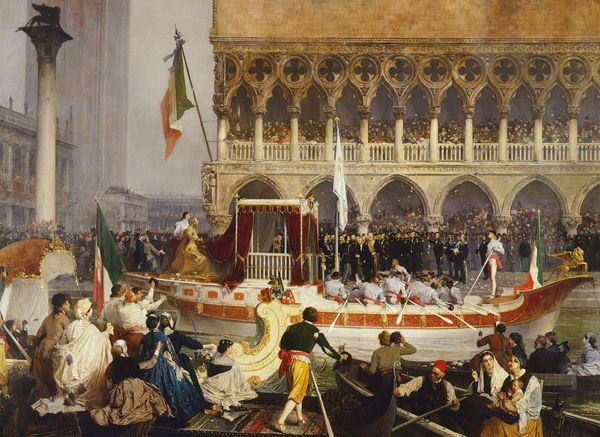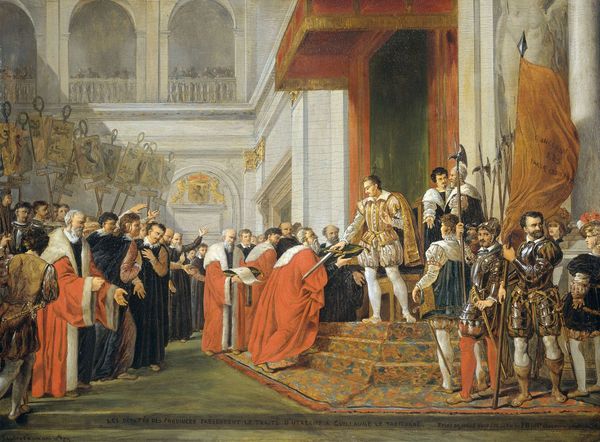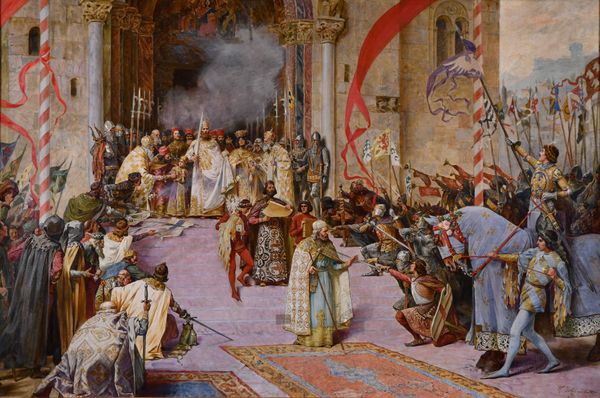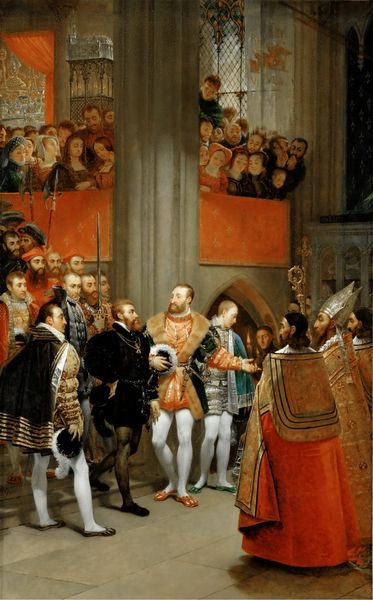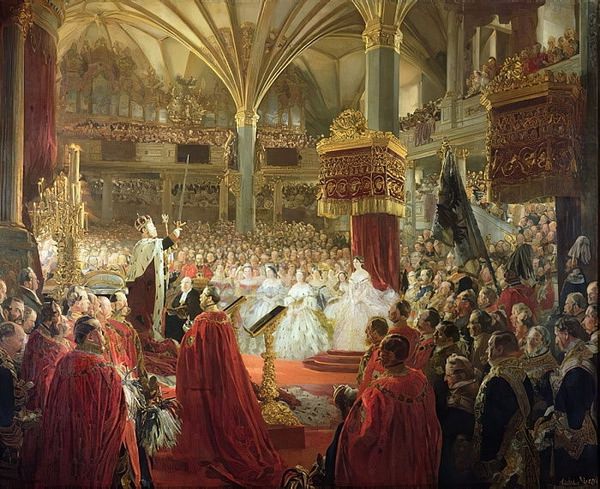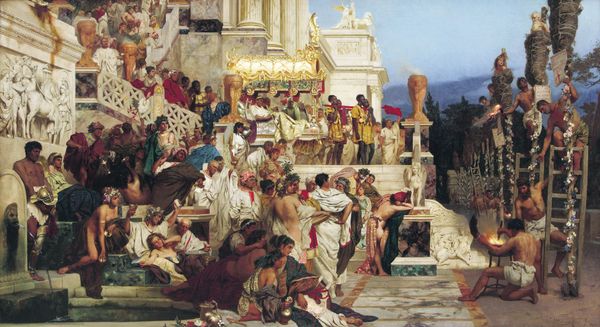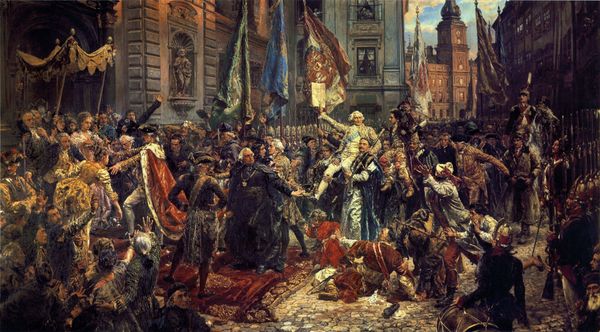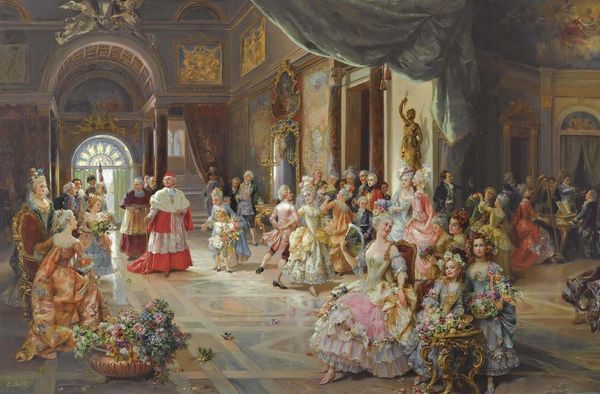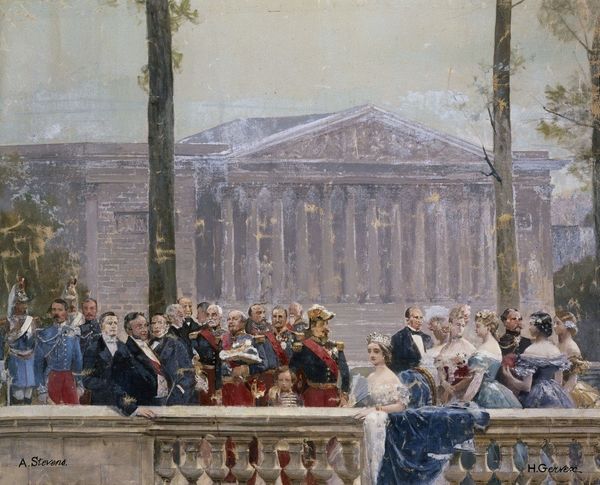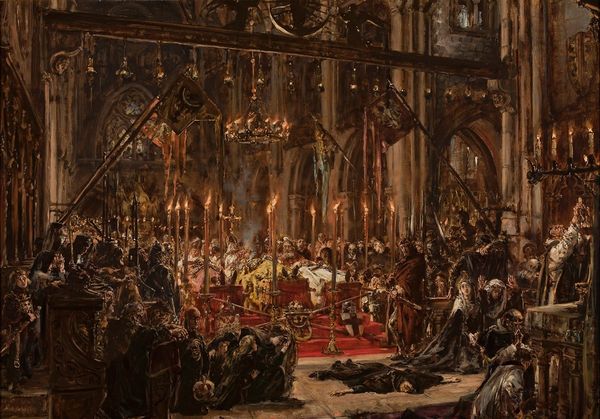
Dimensions: 96.5 x 139.7 cm
Copyright: Public domain
Curator: What an incredible image of power and spectacle! This is "Reception of Le Grand Condé at Versailles" painted in 1878 by Jean-Léon Gérôme, offering a glimpse into French court life. Editor: My immediate thought is, "organized chaos." All those figures and flags create a sense of grandness, but also a visual busyness. I wonder about the work involved in setting up such a scene, both for the historical event and for the painting itself. The materiality of all that fabric, the dyes…it's quite the production. Curator: Absolutely. Gérôme was known for his academic precision and historical accuracy. The painting depicts the return of Louis II de Bourbon, Prince of Condé, to the court of Louis XIV after being in disgrace. This event highlights the intricate political dynamics of the time, as Condé had previously led armies against Louis XIV. Editor: The layers of social stratification are palpable, too. Look at the contrast between the ornate garments of the royal figures and the uniforms of the guards and the elaborate arrangements with flags. What message were all these people communicating through material displays? Were any local workshops able to provide such volume of decorated textile? Curator: Precisely! It shows how Versailles became a stage for power, a theater where the king orchestrated every detail to project an image of absolute authority. The museum and its patrons were complicit of building that symbolic universe of power and glamour, turning it into a statement of national pride through history painting. Editor: Right, think about the patronage system at the time and how that fueled artistic creation and self expression: Gérôme, benefiting from state patronage, recreated this moment, framing a specific version of French history. It all boils down to the economics of representation, the raw materials of status being translated into art. Curator: Indeed. This work invites us to consider the relationship between art, history, and the construction of power. How did paintings like these help shape national identity and the legacy of French royalty? Editor: And for me, it underscores how the artist manipulates the available materials to portray power in paint. Understanding that process can lead us to a better understanding of its social role.
Comments
No comments
Be the first to comment and join the conversation on the ultimate creative platform.
